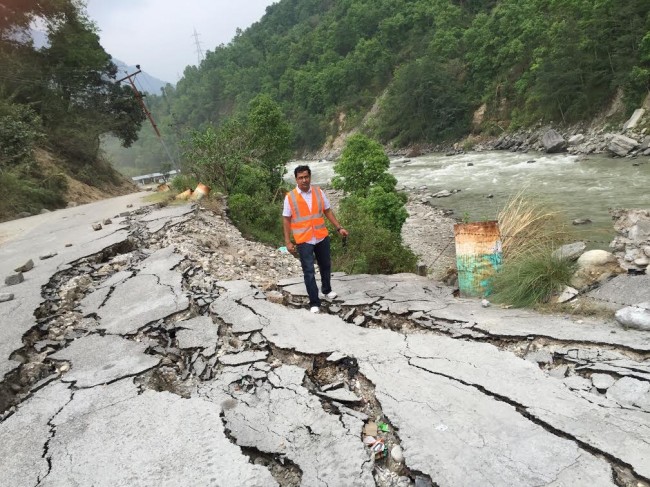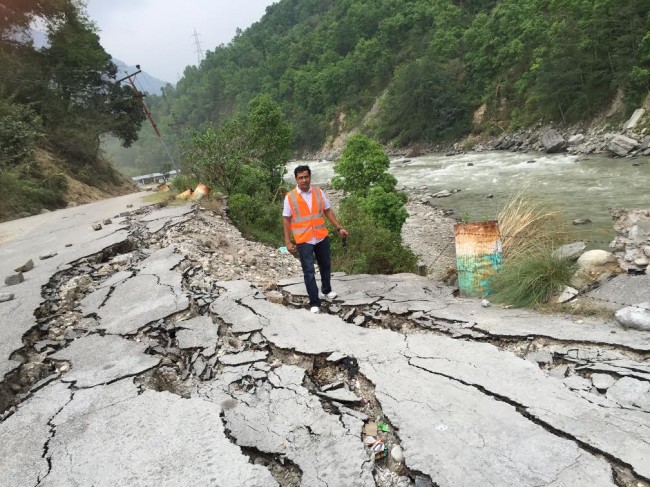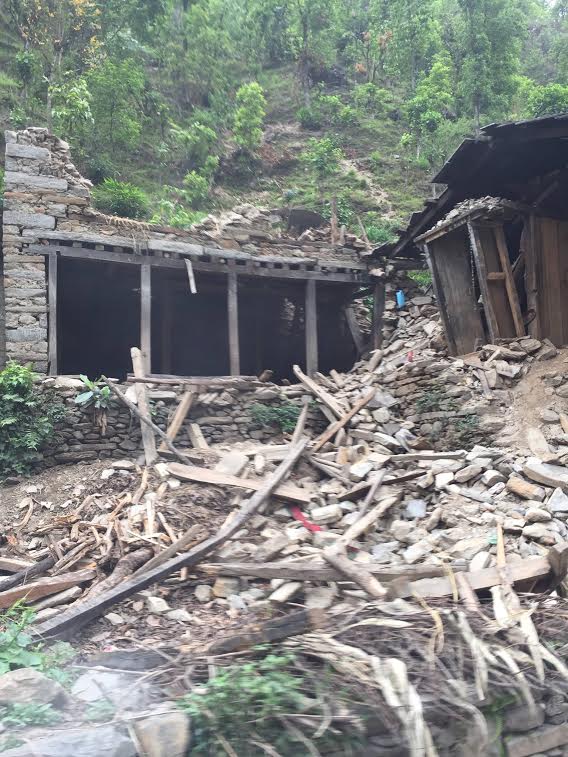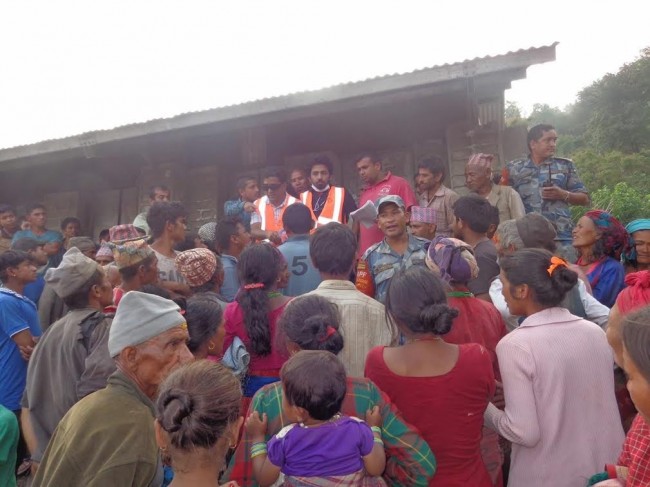DR. SANJEEB SAPKOTA*
I just returned from several weeks of humanitarian work, medical and public health actions in Nepal where a series of earthquake have left over 9000 dead, 70,000 without home and over half a million people displaced. Some parts ofIndiatoo are affected, though most of the tremors were borne byNepal.
I was a part of the health/medical team that conducted medical camps in several rural villages of Sindhupalchowk, Rasuwa, Dhading, Bhaktapur andKathmandu. The team was organized by Non-Resident Nepalese-USA (NRN-USA).
Our medical team treated several thousand people with injuries, ailments and diseases that occurred immediately following the earthquake or prior to the earthquake. Several individuals were given vaccines against tetanus following injuries. Symptoms that individuals presented varied from injuries, back pain, malnutrition, skin rashes, loss of appetite, psychiatric related problems, to fever and cough.
Distributing sacks of rice, tents and tarpaulins (water proof clothes) and blankets to the affected people was another work the team was involved with. Though the need for these supplies is substantial, our effort was able to meet part of the need.
Medical doctors, nurses and health workers from all over the country are highly interested in providing some level of assistance to the survivors of the disaster. However the current medical and surgical needs are met by the resources and expertise inNepal. There is great interest from foreign medical teams to come to the country where there is no apparent need; hence the government has put a stop to them. However the government is seeking foreign medical assistance on a case-by-case basis- some surgeons here and some gynae-obstetricians there.
Our team also made a rapid health assessment to determine the immediate public health needs and shared the findings with the government of Nepal. The findings revealed that the immediate public health concern is the untreated water supply on which the public in the rural area rely. Most of them drink water directly from the natural source without decontaminating it or purifying it. Fortunately, no outbreak is reported or recorded as of today, but immediate actions are needed to prevent spread of water borne diseases in the earthquake area and thereof the start of the outbreak.
Another public health concern is the damage to the houses, which has exposed people to the harsh elements. Most of the people sleep outside either under the tarpaulin (water-proof clothes) distributed by government and non-governmental organization, but those who have not been fortunate enough to get those materials are forced to call the sky their roof. Vulnerable population of children, elderly women, disabled and pregnant women are particularly affected.
The toilets in the houses of rural Nepal too have been damaged or are dangerous to use. Though many people continue using their home toilets regardless of the danger and some have made make-shift toilets, a large number of people still go out in the field for defecation. This has increased the risk of spread of disease.
Roads leading to earthquake hit rural villages are treacherous. Some places do not have roads and can only be reached by foot, after several hours of walking. I particularly recall crossing a suspension bridge over a furious river carrying medical supplies. Another place I went was via Mahindra four wheel truck in the middle of a mountain. The road was muddy, rocky and steep, and the vehicle shook constantly. The passengers could see the river Sun Koshi 2000 feet below and the thought of tumbling down the hill gave chills down the spine.
The world wants to give and help Nepal and her people. Unfortunately the needs on the ground are greater than the speed of the relief efforts. Though this was an unprecedented event that no one expected and no one was prepared for, people are expecting quicker relief and recovery work.
Slowly and steadily, the momentum of relief efforts is picking up, and appears to be more organized and coherent.
*Sanjeeb Sapkota, a medical Epidemiologist residing in Lawrenceville, Georgia, is the chair of health and welfare committee of non-Resident Nepalese-USA. He can be reached at yessapkota@gmail.com







